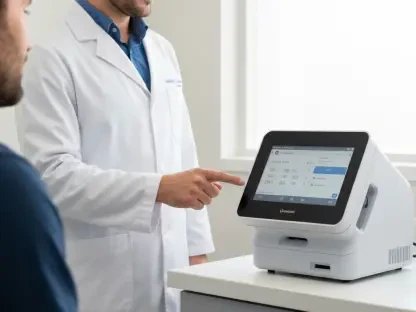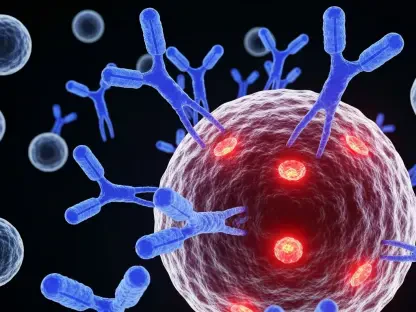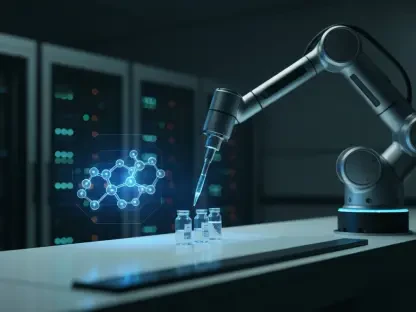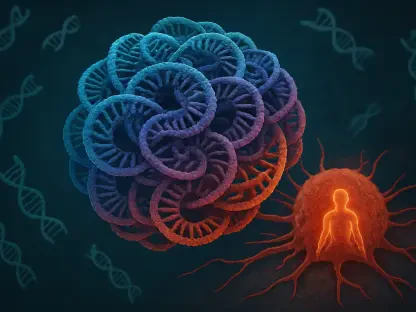In recent years, the aging global population has brought significant attention to age-related health issues, especially sarcopenia—a condition marked by the loss of muscle mass and function. As traditional approaches such as exercise and nutrition struggle to counteract the cellular dysfunctions that accompany muscle aging, novel solutions are in high demand. A promising avenue of research, spearheaded by scientists at Sanford Burnham Prebys and Stanford University, explores the potential of Prostaglandin E2 (PGE2) as a one-time treatment to rejuvenate aging muscle stem cells. This groundbreaking work, performed on older mice, demonstrated that a single dose of PGE2 could restore stem cell functionality, promote muscle regeneration, and reinforce strength, offering a glimpse of hope for combating sarcopenia effectively.
Investigating the Underlying Causes of Sarcopenia
Cellular Dysfunction and PGE2’s Role
At the heart of sarcopenia lies the dysfunction of muscle stem cells, which diminishes as individuals age. Muscle stem cells become less responsive due to decreased levels of natural activators such as PGE2, coupled with their reduced receptor sensitivity. This decline, researchers have found, significantly impacts muscle regeneration and overall strength in the elderly. PGE2 is a naturally occurring lipid that acts as a signaling molecule, prompting muscle stem cells to activate and repair damaged tissues—an ability that wanes in aged individuals. The involvement of PGE2 in reactivating these dormant cells presents a compelling therapeutic angle. By offering a concentrated signal in the form of a single dose, PGE2 challenges the traditional paradigms of muscle aging and suggests a robust method for reinvigorating those essential cellular processes.
Plasticity of Aging Tissues
Another intriguing aspect of the study involves the inherent plasticity of aging tissues. Researchers discovered that, when subjected to the right molecular signals, these tissues can regain abilities akin to their younger state. This capacity for plasticity suggests a window of opportunity where age-related dysfunction can not only be delayed but actively reversed. The research highlighted that PGE2 could induce significant transcriptional changes in older cells, a vital component in revitalizing stem cell function. This finding underscores the potential broader applications of PGE2 beyond muscle, hinting at its utility in other organs like the liver and intestines. It’s significant as it posits that tissue functionality declines with age not out of inevitability but due to the absence of conducive signals that guide cellular processes.
Broad Implications of PGE2 in Rejuvenation Therapies
Beyond Targeted Interventions
PGE2’s effect extends beyond muscle cells and presents a novel approach compared to traditional, more targeted anti-aging interventions. Most approaches to increasing longevity focus on specific biochemical pathways, often by trying to identify and correct a single cause of aging. In contrast, PGE2 influences multiple cellular processes concurrently, offering a comprehensive reboot to cellular functionality. This multifaceted action not only holds promise for more effective rejuvenation therapies but also hints at reducing complications often associated with more singular interventions. By reviving the interplay between different cellular mechanisms, PGE2 reinvigorates both the immediate cellular environment and broader systemic interactions, setting a new precedent for how aging and cellular decline can be managed.
Advancing Towards Clinical Applications
While current findings are predominantly from animal studies, the potential for human application remains a tantalizing prospect. Future research must focus on ensuring the safety and efficacy of PGE2-based treatments in humans, a significant step towards clinical application. The evidence gathered from existing studies, though promising, requires rigorous trials to determine optimal dosages and administration methods for sustained benefits without adverse effects. The successful translation of these findings into human medicine could redefine the management of age-related decline, offering new hope for an aging population seeking quality life preservation.
The Future of Regenerative Medicine
Although most of the research on the topic is based on animal studies, the potential for applying these findings to human health is an exciting possibility. Future studies must concentrate on ensuring that PGE2-based treatments are both safe and effective for humans. This is a crucial step toward making such therapies available in a clinical setting. The data we have so far from various studies seems promising, but it is essential to conduct rigorous clinical trials. These trials need to focus on determining the best dosages and methods of administration to ensure long-lasting benefits without harmful side effects. If scientists successfully adapt these findings to human medicine, it could significantly change how we manage age-related decline. This advancement would offer new hope for an aging population, aiming to maintain their quality of life as they grow older. Ultimately, achieving this could improve healthcare approaches, providing better options for longevity and vitality in our later years.









